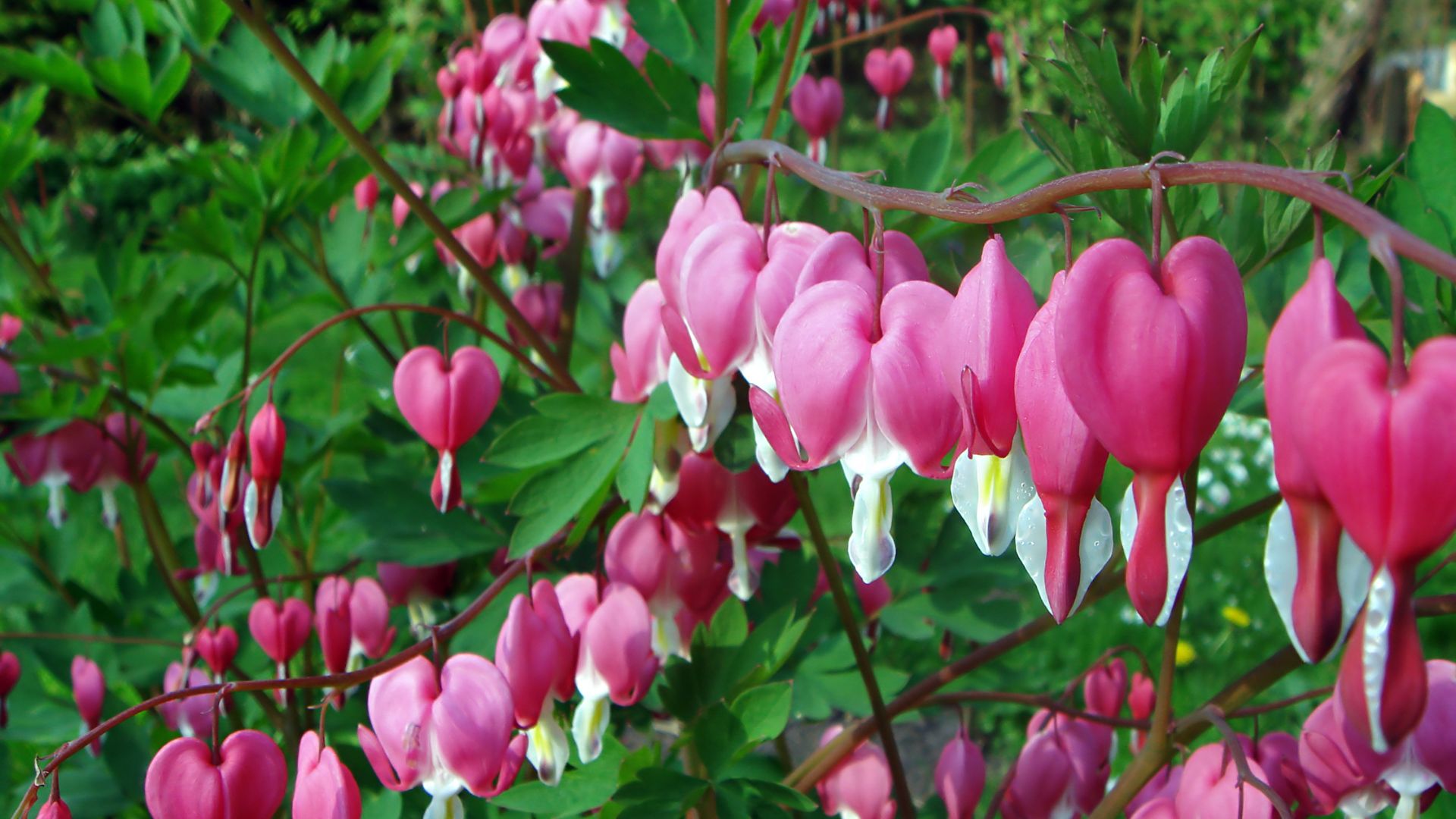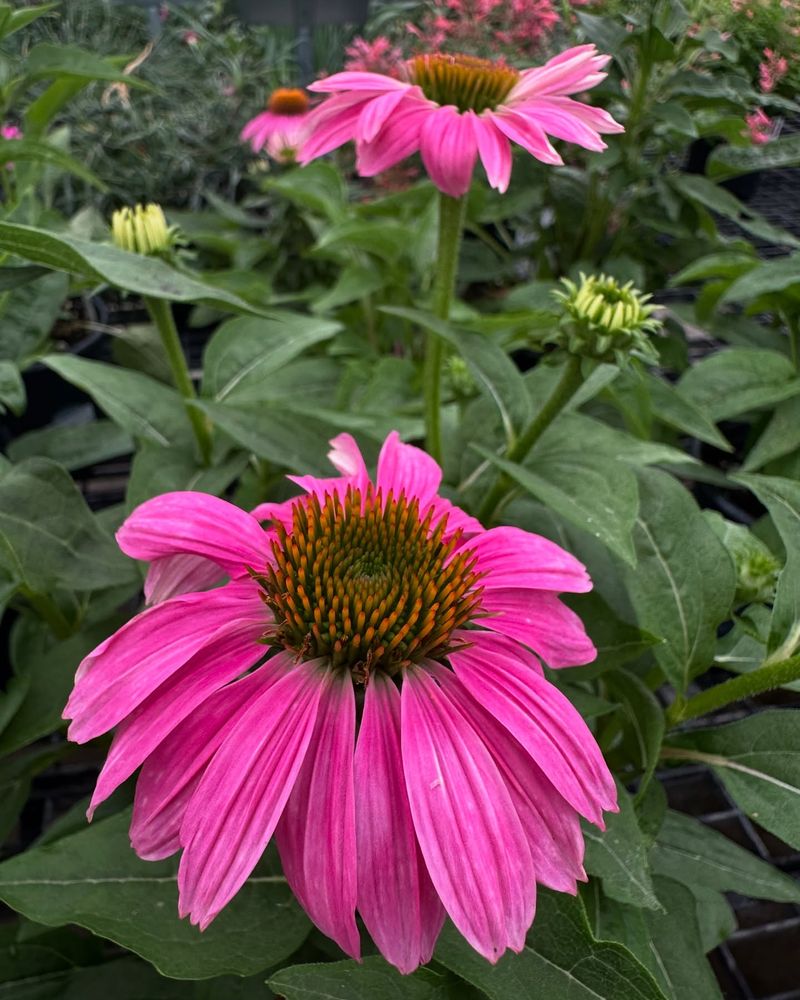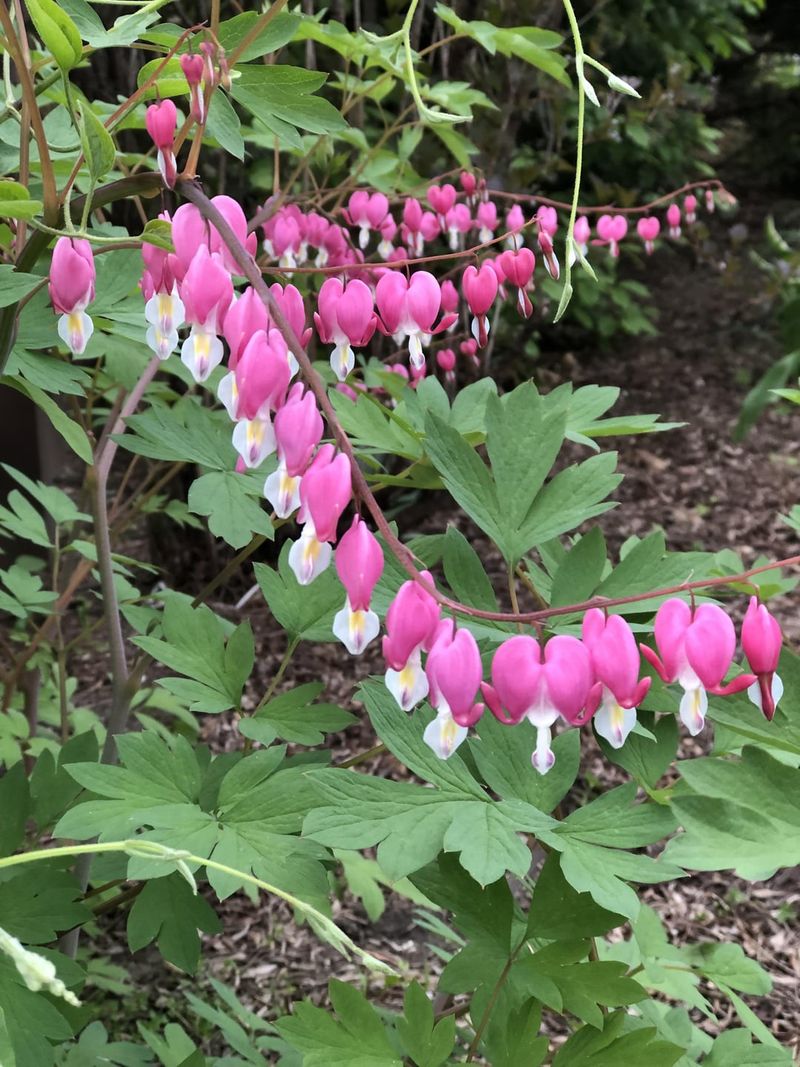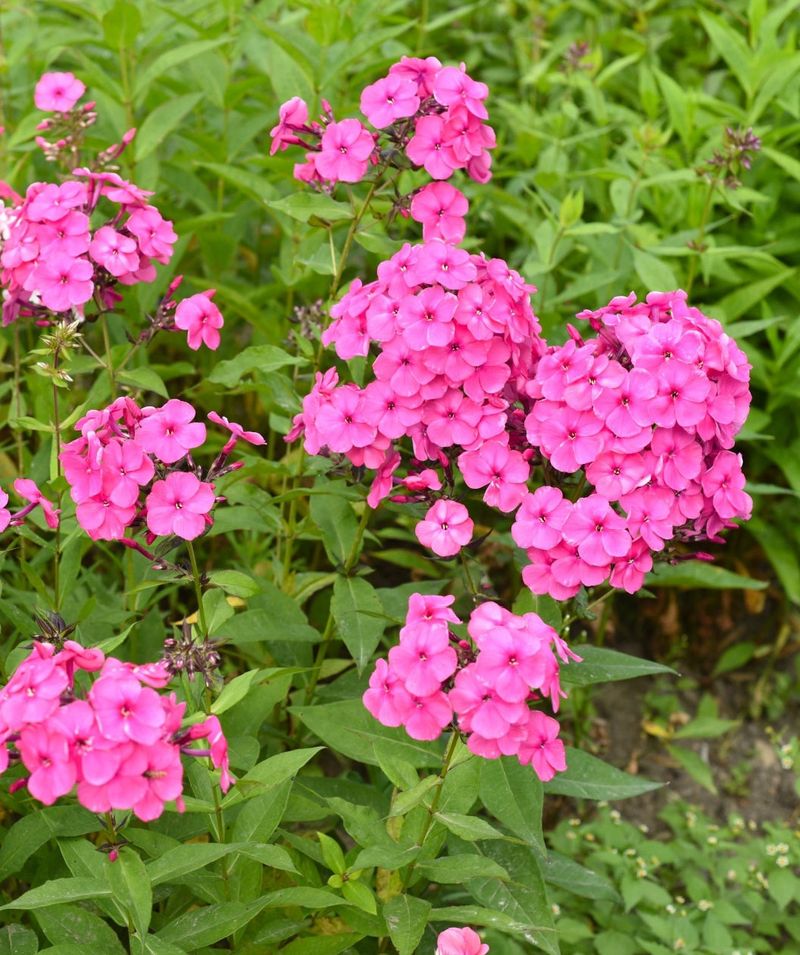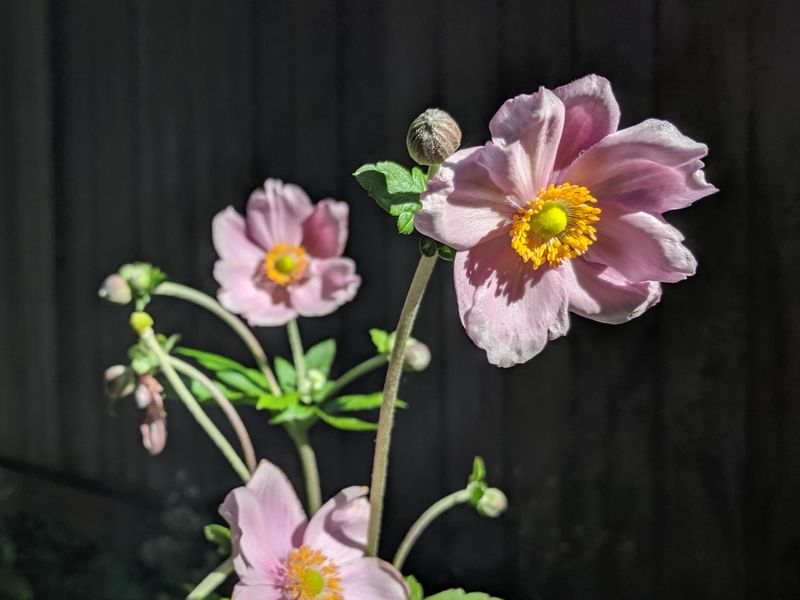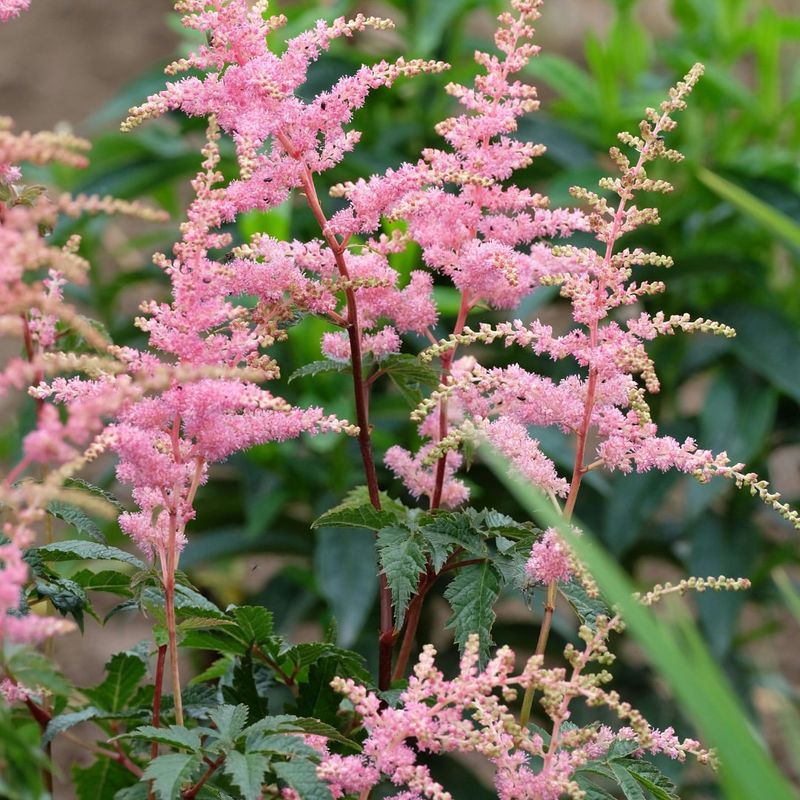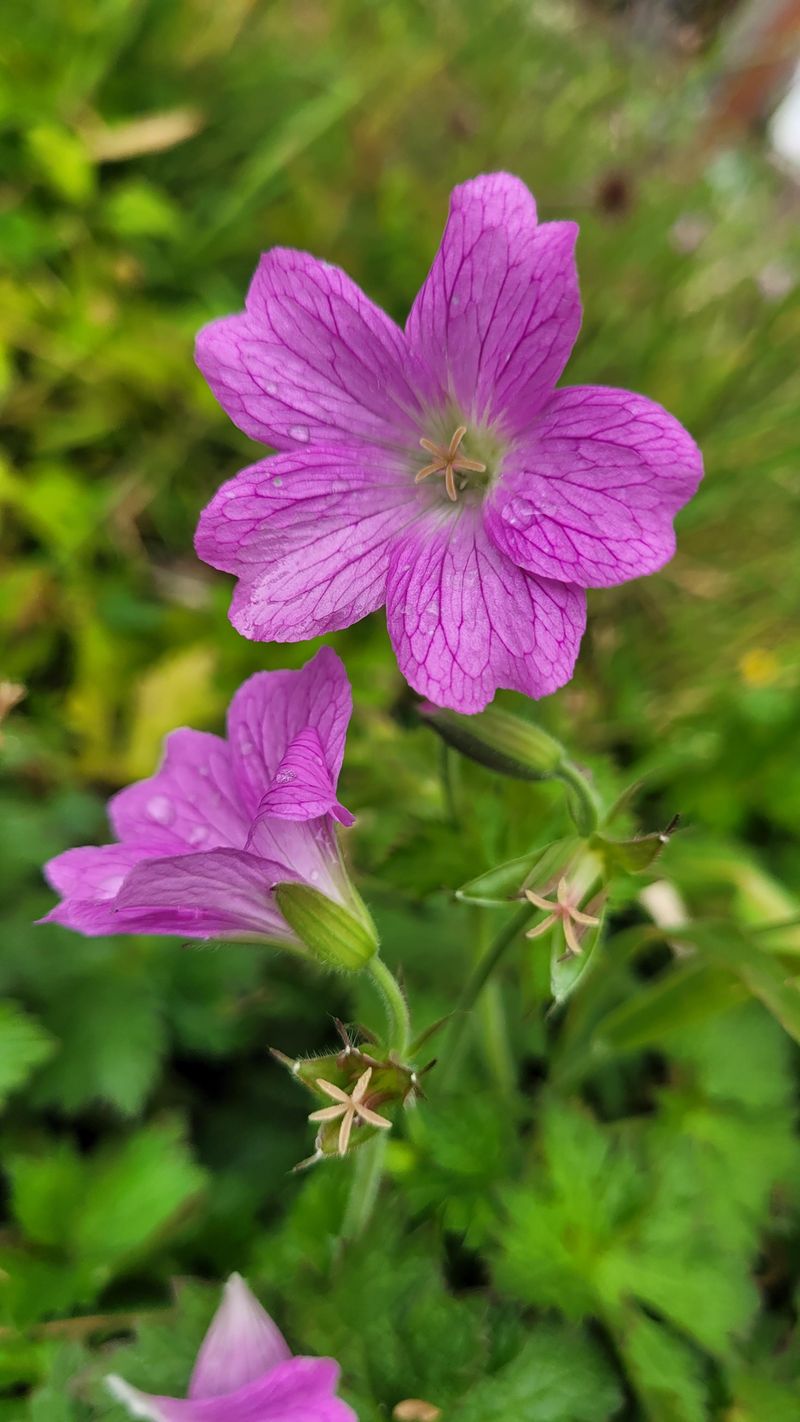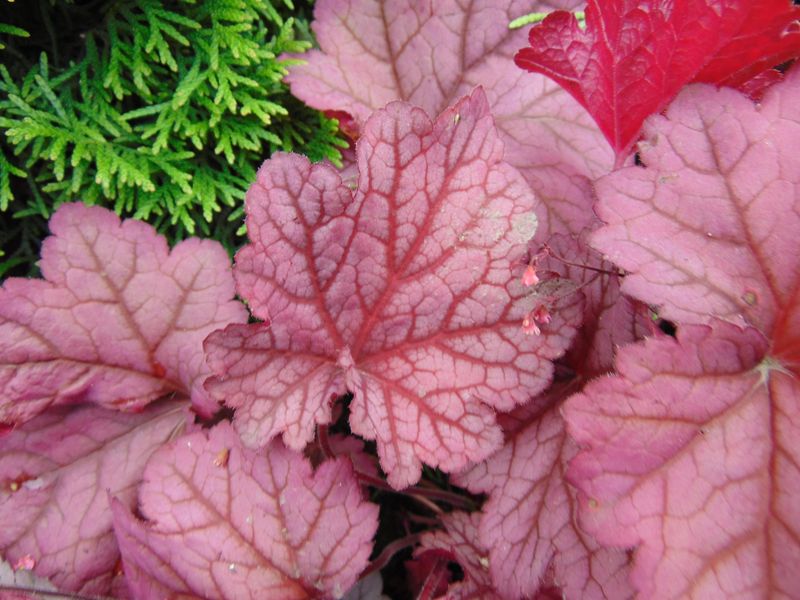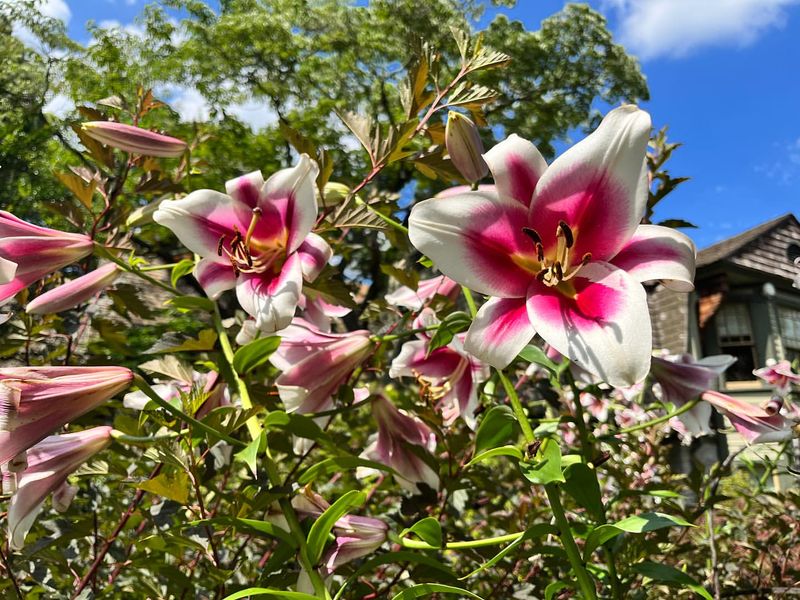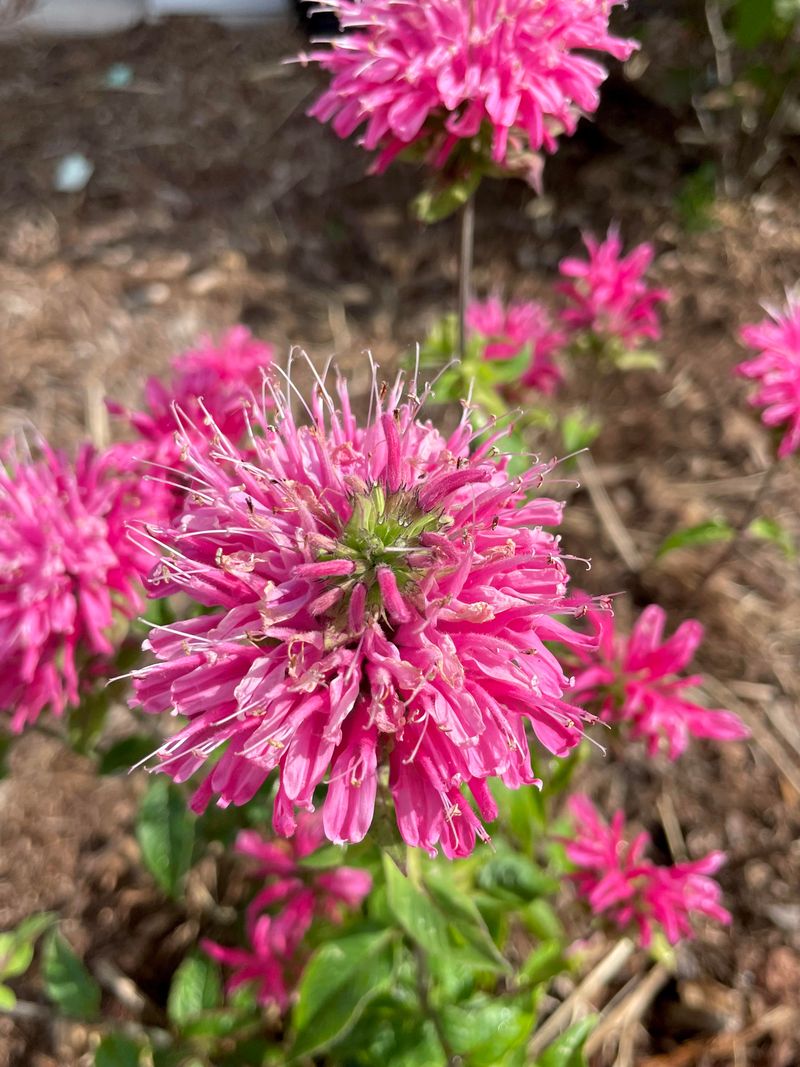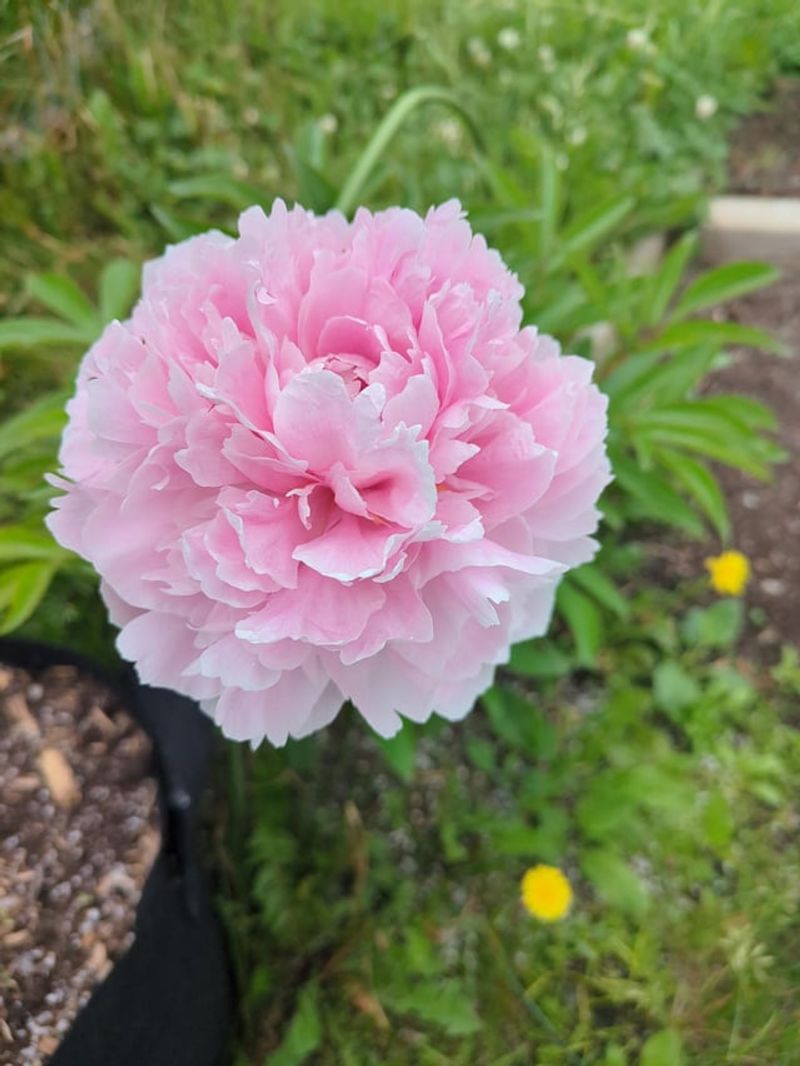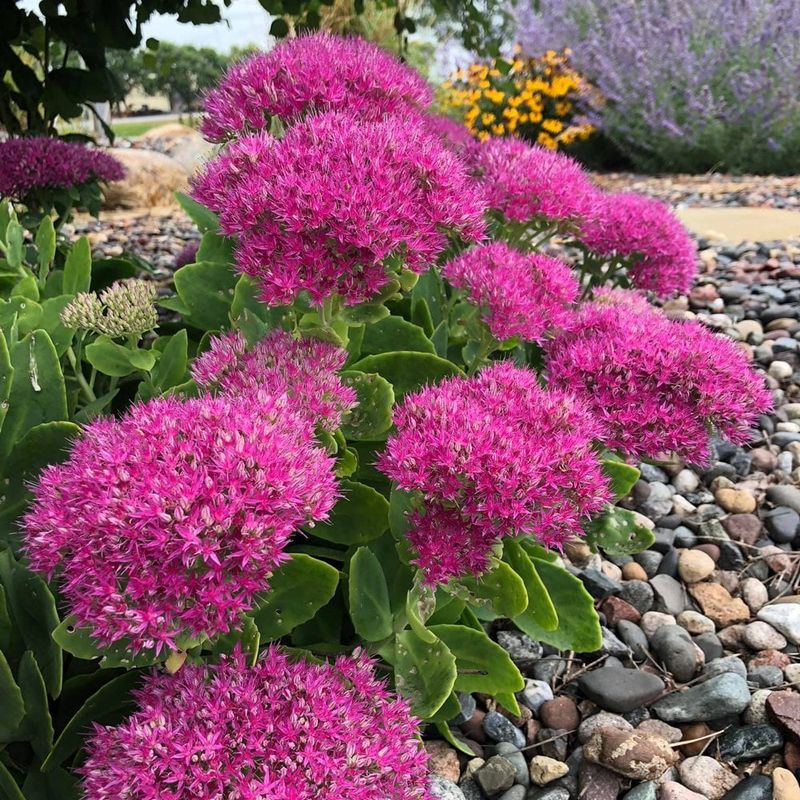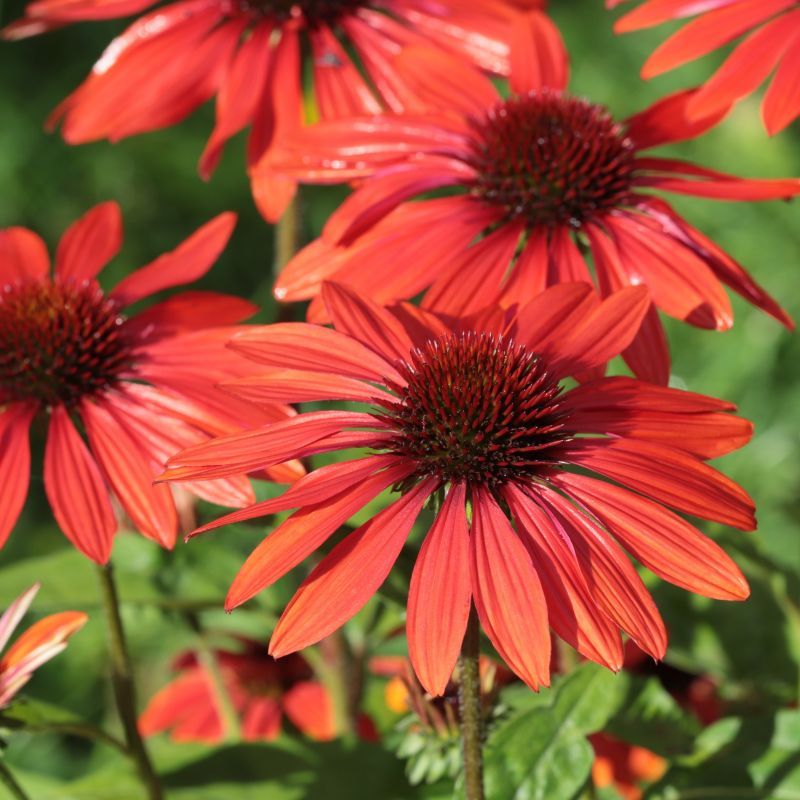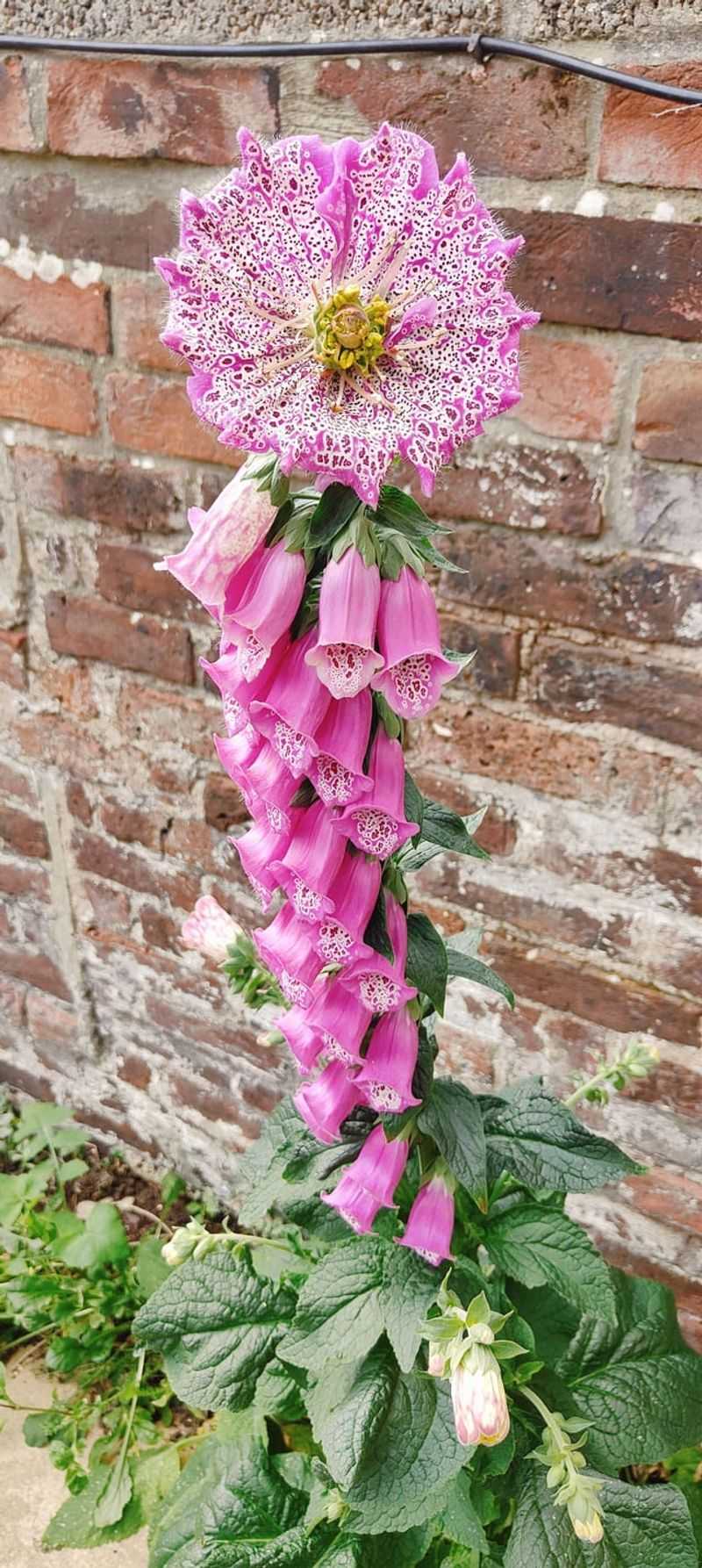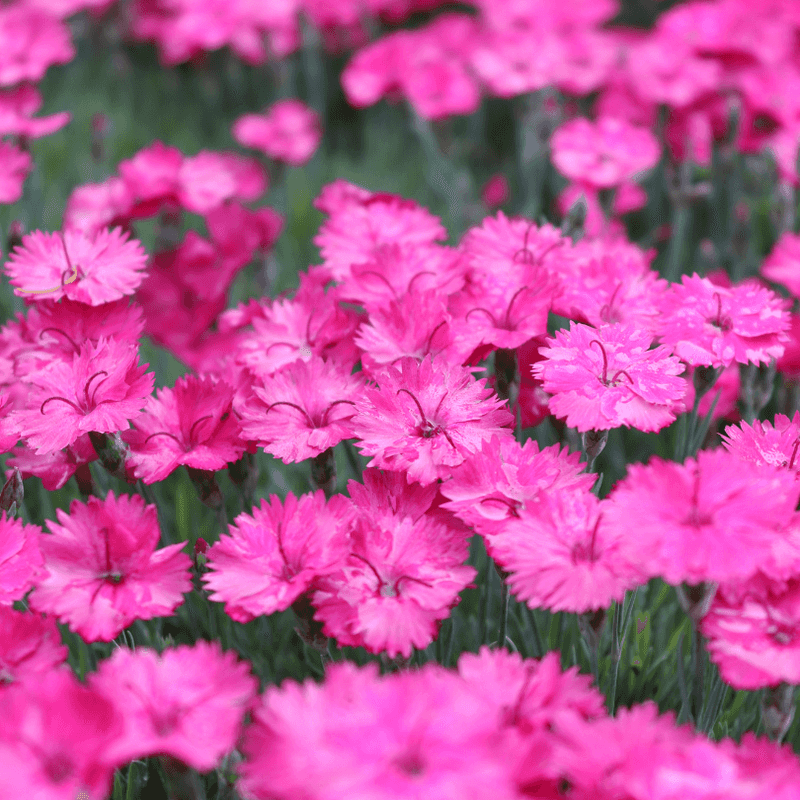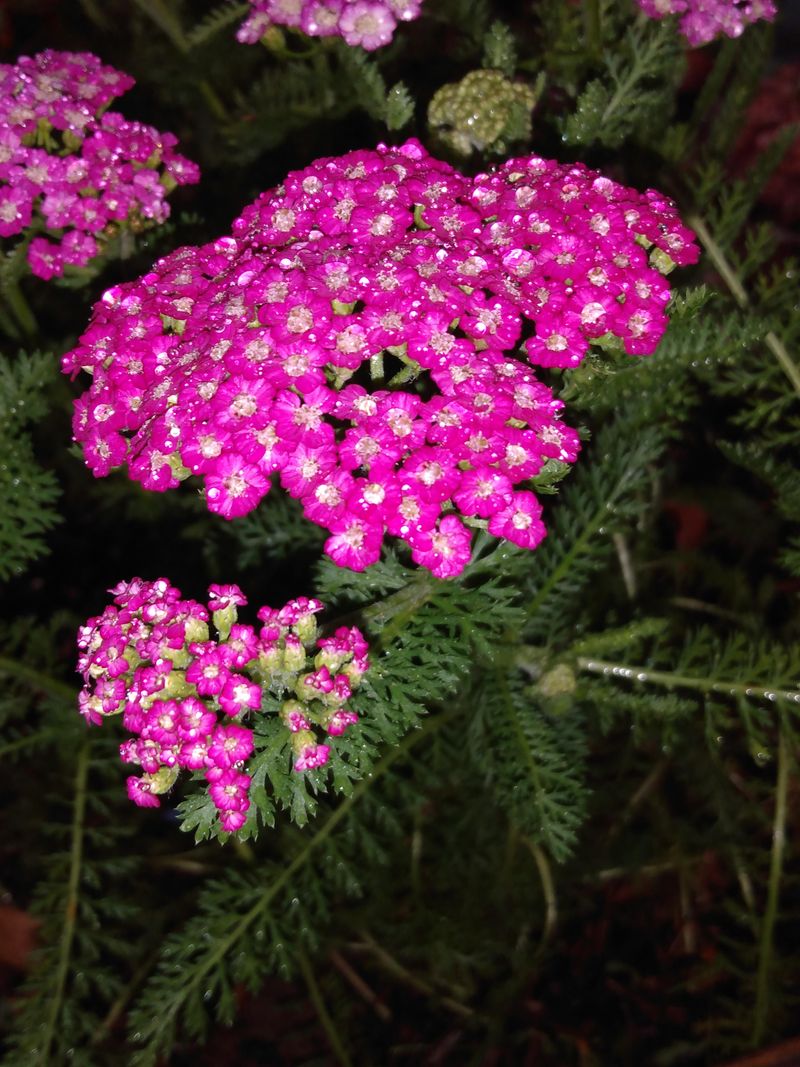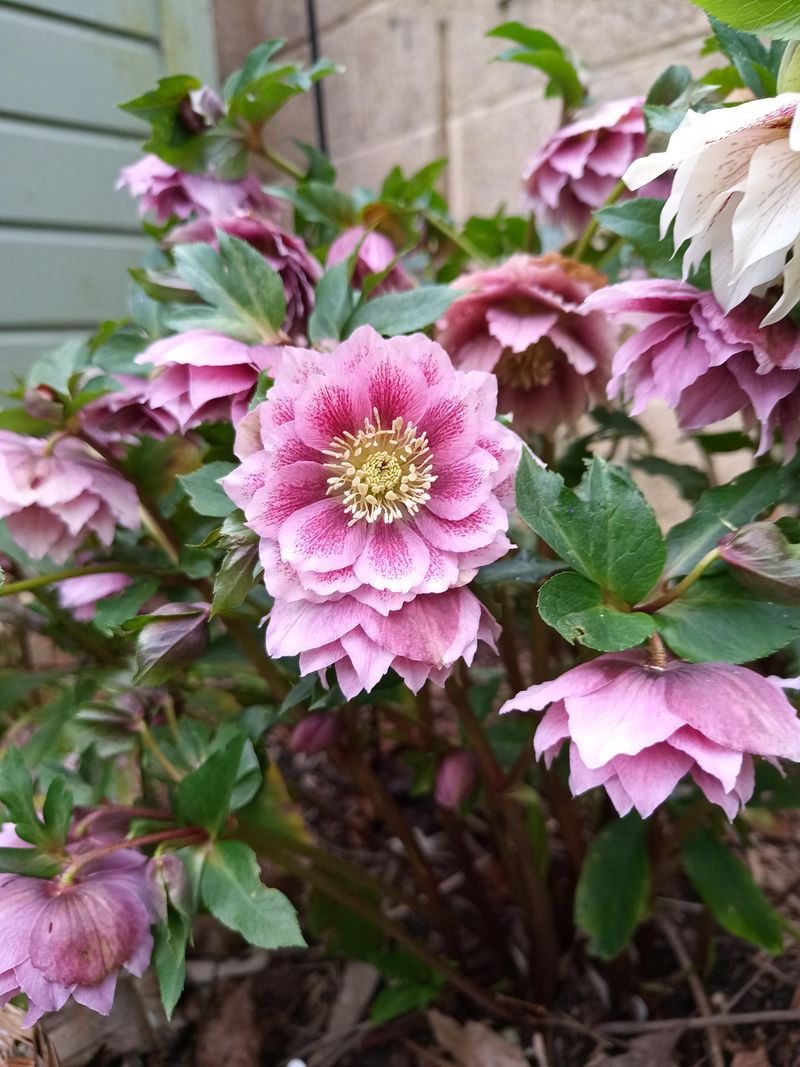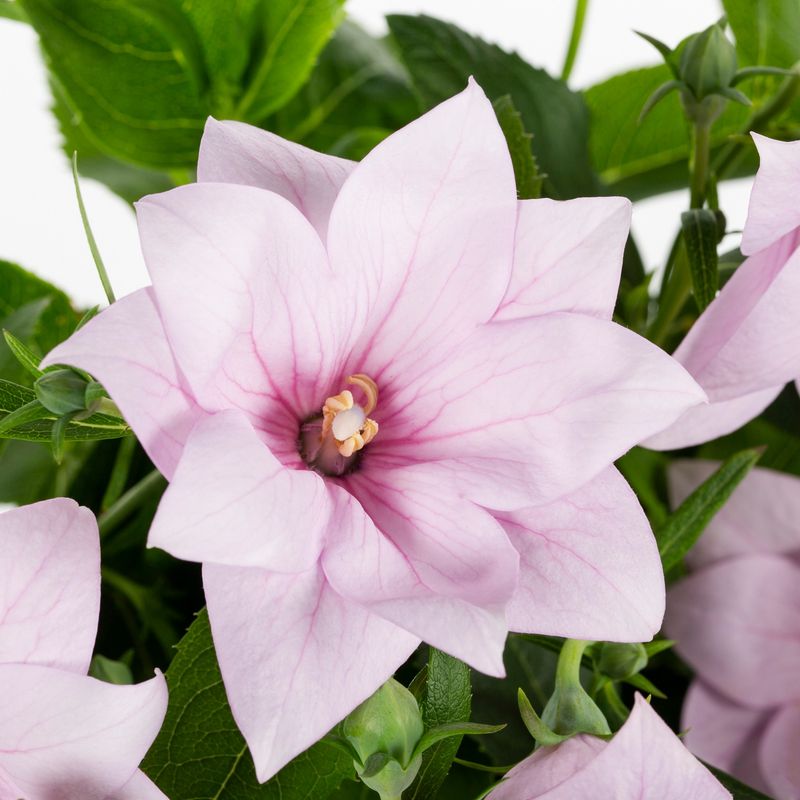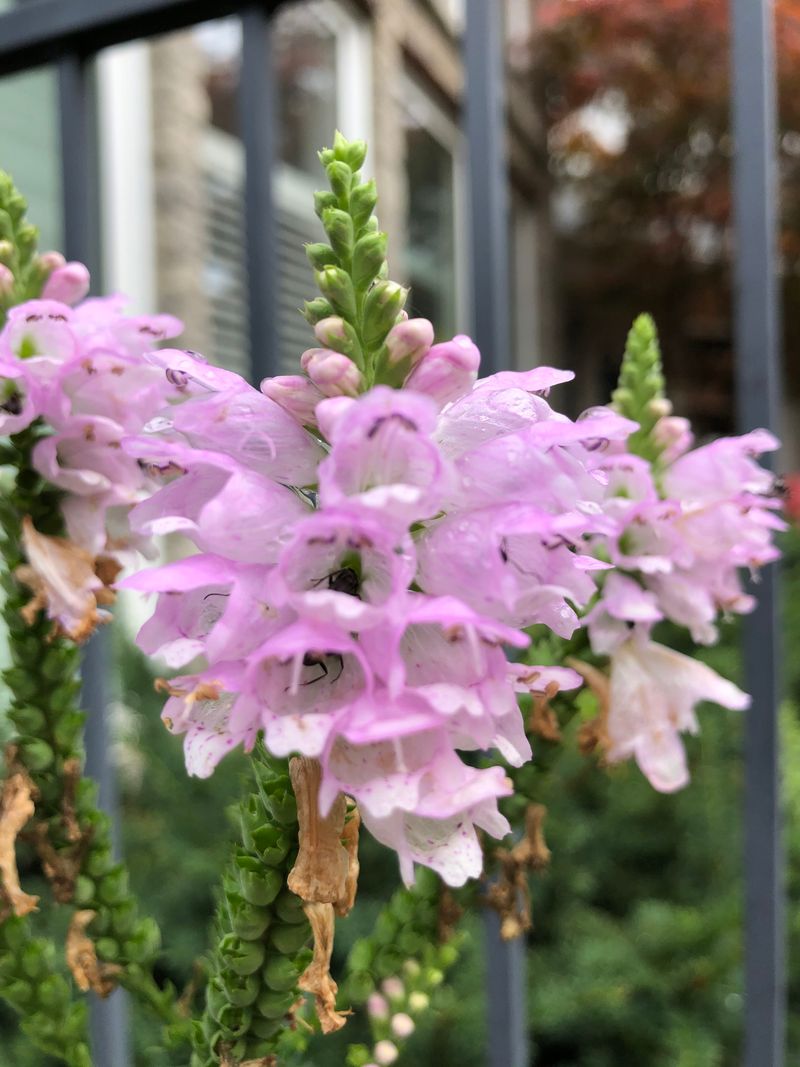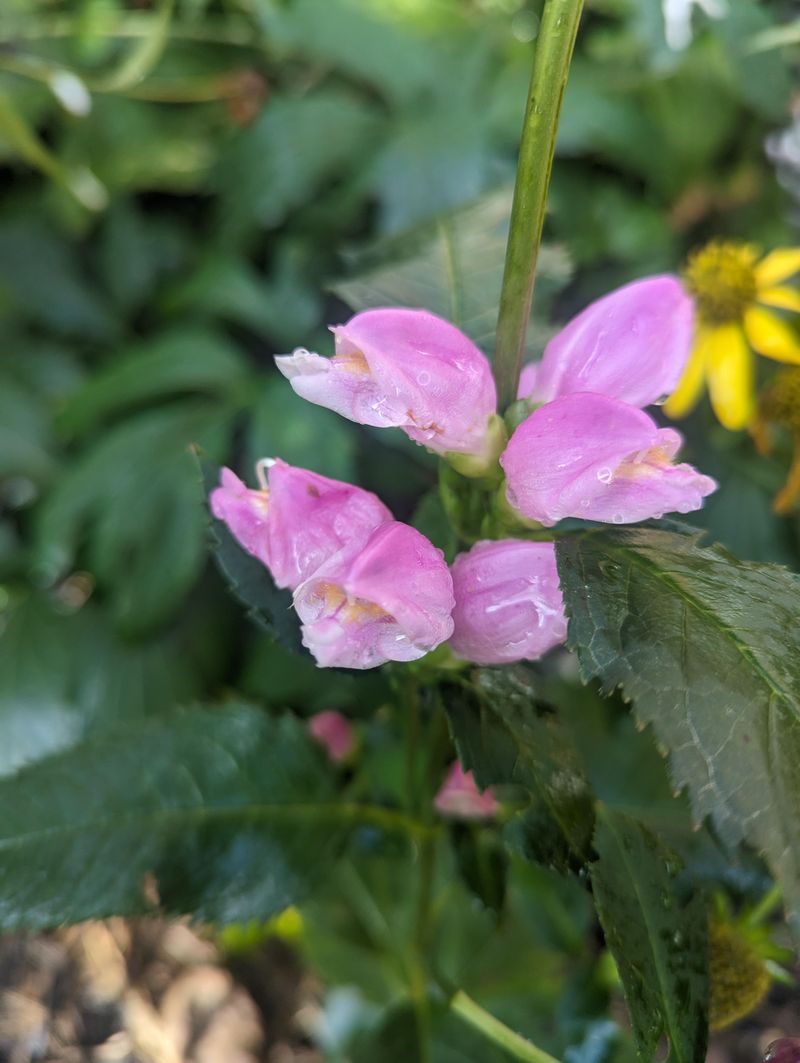Adding pink perennials to your Pennsylvania garden is a reliable way to keep the color coming year after year. These hardy bloomers handle everything from frosty winters to sticky summer heat. And with their soft tones, they gently balance out brighter shades in your landscape design.
Gardeners here know the power of plants that return with each spring—no replanting, no fuss. Pink perennials bring not just charm, but dependability across seasons and spaces. Whether you’re planting in Philly’s tight plots or the rolling hills of Allegheny, they adapt beautifully.
Low-maintenance, climate-tough, and endlessly elegant, they’re the kind of companions your garden will welcome back every year.
1. Pink Coneflower (Echinacea)
Native to Pennsylvania woodlands, pink coneflowers shrug off winter’s worst and return stronger each spring. Their deep root systems make them exceptionally drought-resistant once established.
Plant these beauties in full sun borders or meadow gardens where they can spread naturally. They need minimal care beyond occasional deadheading to extend the blooming period.
My grandmother’s Lancaster County garden featured these along her driveway – thirty years later, those same plants continue flowering reliably from June through September.
2. Bleeding Heart (Dicentra spectabilis)
Heart-shaped blooms dangle from arching stems in early spring, making bleeding hearts one of Pennsylvania’s most charming woodland perennials. Despite their delicate appearance, they’re remarkably cold-hardy down to zone 3.
Gardeners across the state treasure these shade-lovers for brightening darker corners where few flowering plants thrive. They typically go dormant during summer heat, so plant companions nearby to fill in later.
Along the Brandywine Valley, these nostalgic favorites have graced garden beds since Victorian times.
3. Garden Phlox (Phlox paniculata)
Summer gardens throughout Pennsylvania burst with fragrant pink phlox clusters that attract butterflies by the dozen. These native perennials handle our humidity better than most, returning reliably even after harsh winters.
Look for mildew-resistant varieties if planting in the more humid eastern parts of the state. Give them good air circulation and they’ll reward you with weeks of blooms.
Walking through Amish country in July, you’ll spot these beauties in nearly every farmhouse garden – they’ve been passed down through generations.
4. Pink Japanese Anemone
Late-season gardens come alive when Japanese anemones unfurl their silky pink blooms atop tall, wiry stems. These September stars weather Pennsylvania’s unpredictable fall conditions without complaint.
Semi-shaded spots protected from afternoon sun help these perennials establish strong colonies that expand gradually year after year. They particularly shine in transitional areas between lawns and woodland edges.
During a visit to Longwood Gardens, I noticed how these graceful flowers continued performing beautifully even after early frost had claimed most other blooms.
5. Pink Astilbe
Feathery plumes of pink astilbe brighten Pennsylvania’s shadier spots where many flowering plants struggle. Their remarkable cold tolerance ensures they bounce back even after temperatures plummet below zero.
Stream banks and rain gardens throughout the Keystone State showcase these moisture-loving perennials. Their fern-like foliage provides texture even when they’re not blooming.
A friend’s wooded property near Scranton features these along a natural spring – they’ve multiplied steadily for fifteen years without any special attention.
6. Hardy Geranium (Cranesbill)
Carpeting Pennsylvania gardens with waves of pink blooms, hardy geraniums return faithfully regardless of winter’s severity. Unlike their annual cousins, these tough perennials sail through temperature swings without missing a beat.
Perfect for front-of-border positions or spilling over garden walls, they spread gradually to form weed-suppressing mats. Their deeply cut foliage often develops attractive fall coloration before winter dormancy.
Even in Erie’s snow belt region, where winters test the hardiest plants, these reliable performers emerge every spring with renewed vigor.
7. Pink Coral Bells (Heuchera)
Modern breeding has given Pennsylvania gardeners spectacular pink-flowering coral bells that combine colorful foliage with delicate blooms. Their evergreen or semi-evergreen leaves provide winter interest under snow cover.
These versatile perennials thrive in everything from containers to woodland edges across the state. Their compact size makes them perfect for small gardens or front-of-border positions.
Strolling through Pittsburgh’s Phipps Conservatory gardens, I’ve admired how these tough plants handle both urban conditions and our region’s clay soils with equal resilience.
8. Pink Oriental Lily
Towering stems topped with fragrant pink trumpets make oriental lilies unforgettable additions to Pennsylvania perennial beds. Their substantial bulbs store enough energy to withstand cold winters, returning more robust each year.
Plant them where their sweet perfume can be appreciated near patios or walkways. Deer find them irresistible, so protection is necessary in rural areas of the state.
An elderly gardener in Allentown showed me lilies she’d maintained for three decades – proof of their staying power in our climate when properly sited.
9. Pink Bee Balm (Monarda)
Hummingbirds flock to the shaggy pink blooms of bee balm, a Pennsylvania native that handles our climate extremes with ease. These mint family members spread steadily through underground runners, forming impressive colonies over time.
Meadow gardens and naturalized areas throughout the state benefit from their pollinator-friendly flowers. Look for mildew-resistant varieties that perform better in our humid summers.
Near Valley Forge, I’ve watched these plants bounce back after being completely buried under heavy snow – their resilience makes them perfect for beginning gardeners.
10. Pink Peony
Generations of Pennsylvania gardeners have treasured pink peonies for their spectacular late-spring display and incredible longevity. These heirloom perennials often outlive the people who plant them, thriving for 50+ years.
Throughout the state’s small towns and rural areas, they mark old homesteads and family gardens. Their only requirement is good drainage and patience – they improve with age.
My great-aunt’s farm near Gettysburg featured peonies planted before World War II that continue flowering each May, surviving countless harsh winters and summer droughts.
11. Pink Sedum (Stonecrop)
Drought-defying pink sedums bring late-season color to Pennsylvania rock gardens and sunny borders. Their succulent foliage stores water, making them incredibly resilient during our occasional dry spells.
From Philadelphia suburbs to rural Bedford County, these low-maintenance perennials thrive in poor soils where many plants struggle. Their flowers transform from pale pink to deeper rose as autumn progresses.
During the severe drought of 2016, my neighbor’s sedums continued flowering beautifully while other garden plants wilted – a testament to their toughness.
12. Pink Daylily
Virtually indestructible pink daylilies grace Pennsylvania roadside gardens and formal landscapes alike. They shrug off neglect, poor soil, and temperature extremes that would kill lesser perennials.
Country gardens throughout the state’s rural counties showcase these reliable bloomers. While each flower lasts just one day, established clumps produce dozens of buds for weeks of continuous color.
Along the historic Lincoln Highway, I’ve spotted century-old farmhouses where these tough plants continue flowering despite complete neglect – nature’s own preservation committee.
13. Pink Russian Sage
Soft pink varieties of Russian sage create clouds of color in Pennsylvania’s hottest, driest garden spots. Their silvery foliage and drought tolerance make them perfect for challenging sites throughout the state.
Home landscapes from Altoona to Allentown feature these sun-loving perennials in foundation plantings and median strips. Their aromatic foliage deters deer and rabbits – a significant advantage in rural areas.
During the record-breaking heat of 2020, these unfazed plants continued flowering in my Lancaster County garden while neighbors watered frantically.
14. Pink Foxglove (Digitalis)
Stately spires of pink foxglove create vertical drama in Pennsylvania woodland gardens and partially shaded borders. Though technically biennial, they self-seed so reliably they function as returning perennials in most gardens.
Historic properties throughout Bucks County and the Lehigh Valley showcase these cottage garden classics. Their fairy-tale appearance belies their adaptability to our state’s varied growing conditions.
Behind an old stone house near New Hope, I discovered foxgloves that had maintained their own colony for decades without human intervention – nature’s gardening at its finest.
15. Pink Dianthus (Pinks)
Spicy-scented pink dianthus blooms carpet Pennsylvania rock gardens with color from spring through fall. Their blue-green foliage remains attractive even in winter, providing year-round structure.
From formal borders in Philadelphia’s historic districts to cottage gardens in small towns, these European natives have become thoroughly at home in our climate. Their drought tolerance makes them especially valuable during summer water restrictions.
Driving through the Endless Mountains region, I’ve spotted these cheerful flowers brightening old cemetery plots – surviving decades without care.
16. Pink Yarrow (Achillea)
Ferny-leaved pink yarrow stands up to Pennsylvania’s harshest weather conditions while attracting beneficial insects by the hundreds. These prairie-inspired perennials thrive in the state’s hottest, most exposed garden locations.
Community gardens throughout Pittsburgh and Philadelphia incorporate these low-maintenance natives for their reliability and pollinator value. Their flat flower heads provide landing pads for butterflies and essential habitat for beneficial insects.
During a master gardener tour in Centre County, I learned these plants have been used medicinally by Pennsylvania’s indigenous peoples for centuries.
17. Pink Hellebore (Lenten Rose)
Late winter gardens across Pennsylvania light up when pink hellebores push through snow to bloom while most plants still slumber. Their remarkable cold tolerance and evergreen foliage make them uniquely valuable in our climate.
Woodland gardens from the Delaware Valley to the Allegheny Plateau showcase these shade-loving perennials. They gradually form impressive clumps that can be divided to share with friends.
A Philadelphia botanical garden curator once told me these were the only plants flowering after a February ice storm – proof of their exceptional hardiness.
18. Pink Balloon Flower (Platycodon)
Charming buds that puff up like balloons before opening make pink balloon flowers delightful additions to Pennsylvania perennial borders. Their late emergence in spring prevents frost damage that affects earlier-emerging plants.
Suburban gardens throughout the Philadelphia collar counties feature these Asian natives in mixed borders. Their upright habit and sturdy stems rarely require staking, even in our summer thunderstorms.
A retired teacher in York County has maintained the same balloon flower plants for over twenty-five years – they’re among the most dependable perennials in her collection.
19. Pink Obedient Plant (Physostegia)
Native to eastern North America, pink obedient plants earned their curious name from flowers that stay positioned when moved. Their exceptional adaptability to Pennsylvania’s clay soils makes them garden standouts.
Rain gardens and low spots throughout the state benefit from their ability to handle occasional flooding. In drier settings, they spread more slowly and behave more politely.
Along the Susquehanna River floodplain, I’ve seen these natives form impressive natural colonies that bounce back after being completely submerged during spring floods.
20. Pink Turtlehead (Chelone)
Uniquely shaped pink flowers resembling turtle heads make this Pennsylvania native a conversation starter in late summer gardens. Their natural habitat along stream banks makes them perfect for rain gardens and moist areas.
Conservation landscapes throughout the Poconos and other mountainous regions incorporate these beneficial perennials. They support specialized native pollinators that have co-evolved with them over thousands of years.
Visiting a restored wetland near State College, I watched bumblebees performing their specialized “buzz pollination” technique on these flowers – a fascinating ecological relationship.

